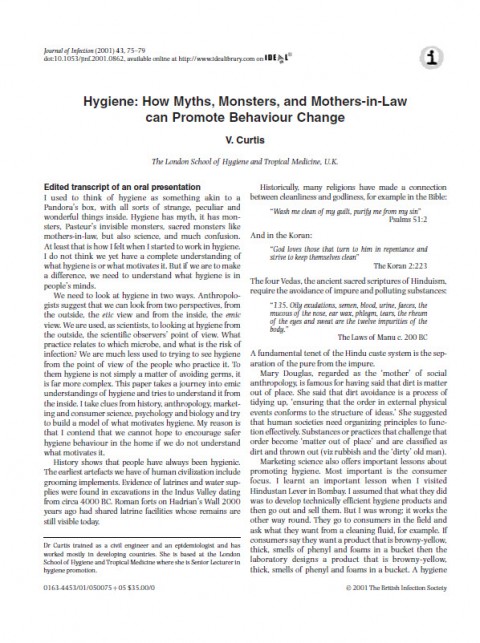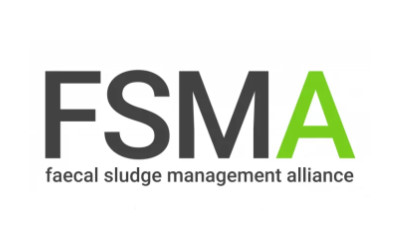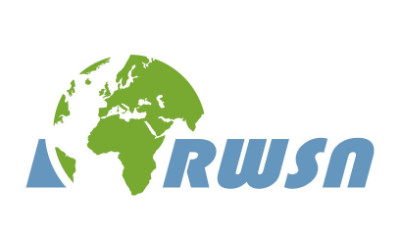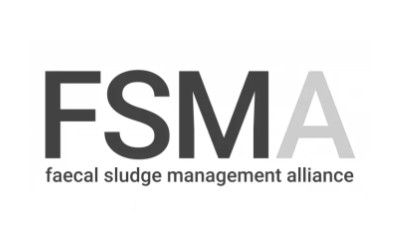
Published in: 2001
Pages: 5
Publisher:
Journal of Infection (2001) 43, 75–79
Author:
Curtis, V.
Uploaded by:
SuSanA secretariat
Partner profile:
common upload
5146 Views
53 Downloads
Content - Summary
Edited transcript of an oral presentation:
I used to think of hygiene as something akin to a Pandora’s box, with all sorts of strange, peculiar and wonderful things inside. Hygiene has myth, it has monsters, Pasteur’s invisible monsters, sacred monsters like mothers-in-law, but also science, and much confusion. At least that is how I felt when I started to work in hygiene. I do not think we yet have a complete understanding of what hygiene is or what motivates it. But if we are to make a difference, we need to understand what hygiene is in people’s minds.
We need to look at hygiene in two ways. Anthropologists suggest that we can look from two perspectives, from the outside, the etic view and from the inside, the emic view. We are used, as scientists, to looking at hygiene from the outside, the scientific observers’ point of view. What practice relates to which microbe, and what is the risk of
infection? We are much less used to trying to see Hygiene from the point of view of the people who practice it. To
them hygiene is not simply a matter of avoiding germs, it is far more complex. This paper takes a journey into emic understandings of hygiene and tries to understand it from the inside. I take clues from history, anthropology, marketing and consumer science, psychology and biology and try to build a model of what motivates hygiene. My reason is that I contend that we cannot hope to encourage safer hygiene behaviour in the home if we do not understand what motivates it.
Bibliographic information
Curtis, V. (2001). Hygiene: How myths, monsters, and mothers-in-law can promote behaviour change. Journal of Infection (2001) 43, 75–79
Filter tags
Behaviour change (WG13) English














